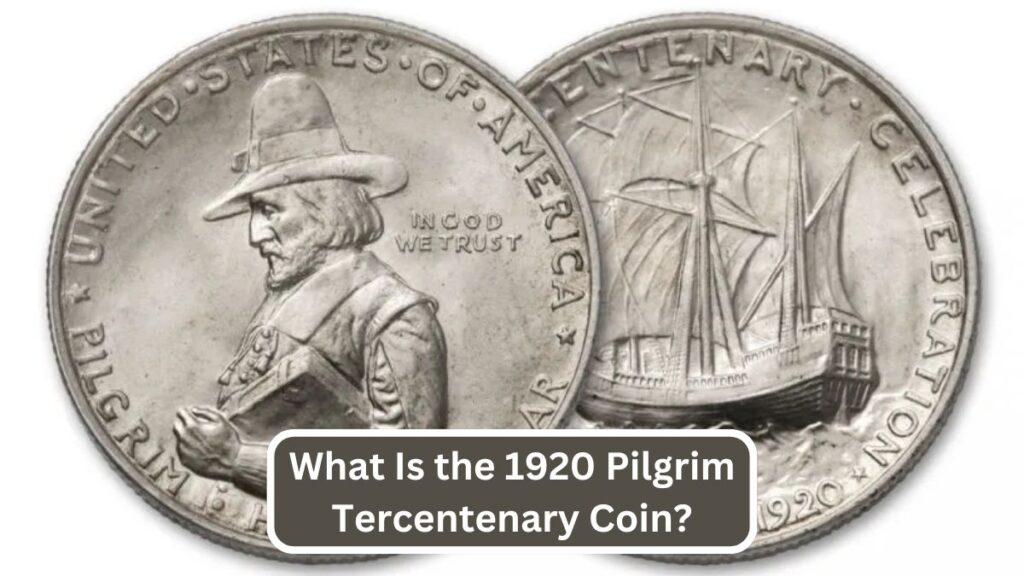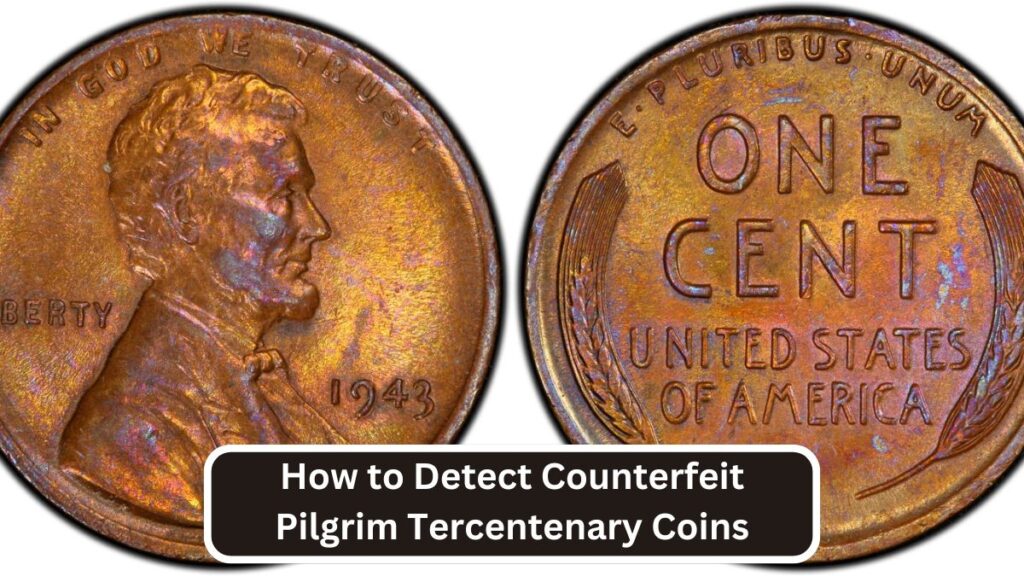Coins tell fascinating stories, but not all coins are authentic. Counterfeit coins can deceive even experienced collectors if they don’t know what to look for. The 1920 Pilgrim Tercentenary Commemorative coin, a highly collectible U.S. coin, has been a target for counterfeiters. Let’s explore how to identify fakes and ensure your coins are genuine.
What Is the 1920 Pilgrim Tercentenary Coin?

The 1920 Pilgrim Tercentenary Commemorative coin was issued to honor the 300th anniversary of the Pilgrims’ arrival in America.
Key Features of the Coin:
- Design:
- Obverse (front): Features a portrait of a Pilgrim holding a Bible.
- Reverse (back): Shows the Mayflower ship.
- Material: Made of silver.
- Mintage: Limited quantities were produced, making it rare and valuable to collectors.
Why Are Counterfeit Coins a Problem?

Counterfeit coins are fake versions of authentic coins, often made to trick buyers into paying for something worthless. The 1920 Pilgrim Tercentenary coin’s rarity and value make it a popular target for counterfeiters.
Risks of Counterfeit Coins:
- You lose money on a fake purchase.
- Counterfeits dilute the value of genuine coins in the market.
- They can tarnish the reputation of coin collecting.
| Aspect | Details | Significance |
|---|---|---|
| Coin Description | Commemorates the 300th anniversary of the Pilgrims’ arrival in America. | Highly collectible due to its historical value and limited mintage. |
| Design Features | Obverse: Pilgrim holding a Bible. Reverse: The Mayflower ship. | Key design elements help differentiate authentic coins from counterfeits. |
| Why Counterfeited? | Rare and valuable, making it an attractive target for counterfeiters. | Counterfeit versions undermine the value of authentic coins. |
| Identification Methods | Weight, size, design details, metal composition, and grading certification. | These methods help detect fake coins effectively. |
| Tools for Verification | Digital scale, calipers, magnifying glass, and silver testing kit. | Ensures accurate measurements and material validation. |
| Role of Professional Grading | Certification by PCGS or NGC confirms authenticity and condition. | Adds credibility and resale value to coins. |
| Buying Safely | Purchase from reputable dealers, auction houses, or certified marketplaces. | Reduces the risk of buying counterfeit coins. |
| Magnetic Test | Genuine coins are made of non-magnetic silver. | A simple yet effective way to check for authenticity. |
| Actions if Suspected Fake | Consult professionals, avoid reselling without confirmation, and report counterfeit coins. | Prevents the spread of fake coins and protects other collectors. |
| Collector Precautions | Educate yourself, keep purchase records, and store coins securely. | Protects your collection from fraud and damage. |
| Registry and Certification | Certified coins are documented by grading organizations like PCGS or NGC. | Ensures long-term security and traceability of authentic coins. |
How to Detect Counterfeit Pilgrim Tercentenary Coins

1. Check the Weight and Size
- Authentic coins have specific dimensions.
- Use a digital scale and calipers to compare with official standards.
2. Inspect the Details
- Examine the engraving closely.
- Look for sharp edges and clear designs. Fakes often have blurry or uneven features.
3. Test the Metal
- Genuine coins are made of silver.
- Use a silver testing kit or check for magnetic properties (silver is not magnetic).
4. Use Professional Grading
- Purchase coins graded by reputable organizations like PCGS or NGC.
- Graded coins come with certificates verifying authenticity.
5. Buy From Trusted Sellers
- Avoid unknown sellers or deals that seem too good to be true.
- Reputable dealers provide guarantees of authenticity.
Why Collectors Value the Pilgrim Tercentenary Coin
Collectors treasure this coin for its historical significance, limited mintage, and artistic design. Ensuring authenticity preserves the value of such collectibles for future generations.
FAQs
What is the 1920 Pilgrim Commemorative Coin?
The 1920 Pilgrim Commemorative Coin honors the 300th anniversary of the Pilgrims’ arrival in America. It features a Pilgrim holding a Bible on the front and the Mayflower on the back, making it a favorite among collectors.
Why is the Pilgrim Coin Targeted by Counterfeiters?
This coin is rare, historically significant, and valuable. Its popularity among collectors makes it an attractive target for counterfeiters looking to profit from its demand.
How Can I Identify Fake Pilgrim Coins?
To spot a fake:
Check the coin’s weight and size against official standards.
Inspect the engraving details—fakes often have blurry or uneven designs.
Test the metal—authentic coins are made of silver.
Look for certifications from trusted grading services like PCGS or NGC.
What Tools Do I Need to Verify the Coin?
You can use:
A digital scale and calipers to measure weight and size.
A magnifying glass or loupe to inspect details.
A silver testing kit to confirm the coin’s material.
Why Is Professional Grading Important?
Professional grading services evaluate coins for authenticity and condition. Certified coins come with a grading certificate, ensuring their authenticity and protecting your investment.
The 1920 Pilgrim Tercentenary Commemorative coin is a piece of history that deserves to be preserved. However, counterfeit versions threaten its value and legacy. By learning to spot fakes through weight checks, design inspections, and professional grading, collectors can protect themselves and keep the joy of coin collecting alive. Always buy from trusted sources to ensure authenticity and maintain the integrity of your collection.














